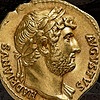HOME | DD
 Crassor — Siege of Poznan. Liberation 16
Crassor — Siege of Poznan. Liberation 16

Published: 2024-04-16 16:33:12 +0000 UTC; Views: 555; Favourites: 2; Downloads: 0
Redirect to original
Description
Himmler had no military training, but he knew how to understand people. One of his first decisions was to appoint a new commandant of Poznan. Instead of the aged General Mattern, the fanatical Colonel Gonell, who had been promoted to major general, became the new commander of the fortress.
Soviet tankers passed between rows of snow-covered airplanes. Dozens of Heinkel 111s lined up at the Poznan airfield. All of them were chained to the ground by the lack of fuel. The days of the "thousand-year Reich" were numbered.
But the Poznan garrison was in no hurry to capitulate. The commander of the 1st Tank Army, General Katukov:
Poznan was a typical tank "shower trap. On its narrow, well-prepared for defense streets, the Germans would have knocked out all our vehicles." "The order was to bypass Poznan from the north and south, and close the ring ... to prevent the garrison from escaping to the west.
Katukov was authorized to move on - to Berlin. The infantry of the 8th Guards Army of Chuikov, a veteran of Stalingrad, stormed Poznan.
The very expediency of storming the city was not questioned - Poznan was the most important junction of railroad and dirt highways. Chuikov's guardsmen began their attacks on January 26. It was not in their plans to storm every house.
From Chuikov's memoirs:
From the west we did not attack. We deliberately left an exit here, hoping that the enemy would use it and move out of the fortress.
However, contrary to expectations, the surrounded garrison did not even try to break through. The first attempts to capture Poznan showed that it was a "hard nut to crack".
Poznan (German name Posen). It fell to Prussia after the third partition of Poland at the end of the 18th century. Its fortress consisted of a citadel surrounded by forward forts. These forts were still important as fortifications in 1945. Their ceilings were 3 meters thick and could easily withstand the fire of Soviet field artillery. In Poznan there were about 60 thousand German soldiers and officers.
From the memoirs of Chuikov:
In Poznan our army first met with the fortress forts. To storm the forts 152 mm guns were obviously not enough.
Back in 1943, Hitler proposed the strategy of "fortresses" (festung) - holding large road junctions with strong garrisons even in complete isolation. If in Belarus and Ukraine this strategy was not supported by the military, then with the beginning of the battle for Germany the situation changed. More and more often, instead of attempting to break through, the garrisons of surrounded cities adhered to the strategy of "fortresses".
Even after bypassing and encircling such a "fortress", the highways and railroads remained blocked by the enemy. Neither trains with ammunition and fuel, nor columns of trucks could not pass through the city. It was necessary to find ways of detour. This worsened the supply of the forward units. On the other hand, the siege of "fortresses" delayed units and formations.
The advancing groups lost their striking power and the offensive slowed down. The second assault on Poznan took place on January 28. The commander of the 8th Guards Army addressed the garrison with an ultimatum:
I, General Chuikov, suggest that you immediately lay down your arms and surrender. I guarantee your life and return to your homeland after the war. Otherwise you will be annihilated.
But the Soviet troops did not see any white flags. It was no coincidence that Chuikov called the commandant of the fortress General Gonnell - "a mother Nazi". Under his command, the Germans continued to resist with the desperation of the doomed. In the meantime, Katukov's tankers bypassed Poznan and marched westward, approaching Berlin with each passing hour.

















